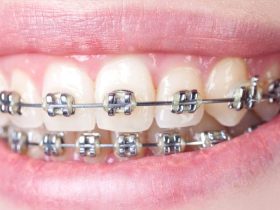Cataract surgery is a highly effective procedure that restores vision by replacing a cloudy natural lens with an artificial intraocular lens (IOL). When undergoing private cataract surgery, patients have access to a wide range of advanced lens options, allowing them to customize their vision based on lifestyle, budget, and visual needs. Choosing the right lens is crucial for achieving optimal outcomes, whether you want to reduce dependency on glasses or correct additional vision problems.
Understanding Intraocular Lenses (IOLs)
What Is an IOL?
An intraocular lens (IOL) is a small, artificial lens implanted in the eye during cataract surgery to replace the clouded natural lens. Modern IOLs are designed with different focusing abilities to enhance vision at varying distances.
How Do IOLs Differ?
IOLs vary based on material, design, and focal range. Some lenses provide sharp distance vision but require reading glasses for close-up tasks, while others offer seamless vision across multiple distances. Selecting the right IOL depends on individual preferences and vision goals.
Types of IOLs for Private Cataract Surgery
1. Monofocal Lenses – Standard Clarity at One Distance
Monofocal lenses provide clear vision at a single focal point, usually set for distance vision. Patients who choose monofocal lenses will still need reading glasses for near tasks like reading or using a smartphone. These lenses are typically the most affordable option and are ideal for individuals who don’t mind wearing glasses for certain activities.
2. Multifocal Lenses – Seeing Clearly at All Distances
Multifocal lenses are designed to provide clear vision at near, intermediate, and far distances. They use multiple optical zones to allow the brain to adjust focus depending on the viewing distance. While these lenses reduce dependency on glasses, some patients may experience halos around lights, particularly at night. Multifocal lenses are a good choice for those who want greater visual independence.
3. Extended Depth of Focus (EDOF) Lenses – Balanced Vision with Fewer Side Effects
EDOF lenses are a newer category that provides an extended range of clear vision without the multiple optical zones of multifocal lenses. They enhance intermediate and distance vision while offering some near focus. These lenses tend to have fewer side effects like halos or glare, making them a great option for those who want a compromise between clarity and versatility.
4. Toric Lenses – Correcting Astigmatism for Sharper Vision
Toric lenses are specifically designed for individuals with astigmatism, a condition where the cornea has an uneven shape, causing blurred vision. These lenses correct astigmatism while also providing the benefits of monofocal or multifocal IOLs. They are essential for patients who want sharper, more natural vision without needing additional corrective eyewear.
5. Accommodating Lenses – Mimicking the Natural Lens
Accommodating lenses shift slightly in response to eye muscle movement, mimicking the natural focusing ability of the eye. These lenses provide a continuous range of vision, reducing the need for reading glasses. While they offer flexibility, their effectiveness can vary between individuals.
Factors to Consider When Choosing an IOL
1. Lifestyle and Daily Activities
Your daily activities play a significant role in selecting the best IOL. If you frequently read, use a computer, or drive at night, a lens option like an EDOF or multifocal lens might be ideal. If you prefer crisp distance vision and don’t mind reading glasses, a monofocal lens may be the best choice.
2. Budget and Affordability
Premium lenses, such as multifocal and toric IOLs, often come at a higher price than standard monofocal lenses. Patients opting for private cataract surgery typically have more flexibility in choosing advanced IOLs but should consider the cost versus the benefits.
3. Night Vision and Light Sensitivity
Some lenses, particularly multifocal IOLs, can cause halos or glare in low-light conditions. If night driving is a priority, an EDOF or toric lens may be a better option.
4. Additional Eye Conditions
Patients with other eye conditions, such as glaucoma or macular degeneration, should discuss lens options with their ophthalmologist. Certain IOLs may not be suitable for individuals with pre-existing vision problems.
Conclusion
Choosing the right IOL is a crucial decision in achieving the best vision outcomes after cataract surgery. With options ranging from monofocal and multifocal lenses to toric and accommodating IOLs, patients undergoing private cataract surgery can select a lens that best suits their lifestyle and vision needs. Consulting with an experienced ophthalmologist will help determine the most suitable lens, ensuring clear and comfortable vision for years to come.









